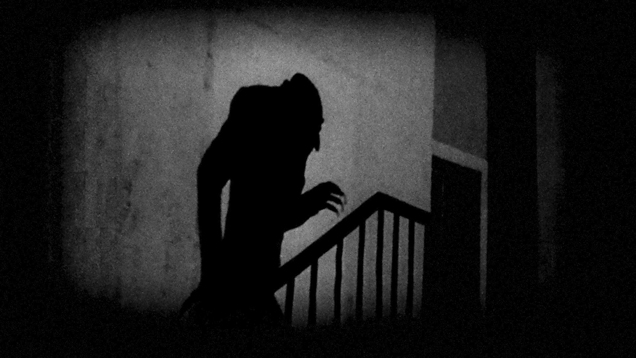Nosferatu the immortal
 CREDIT: F.W. MURNAU
CREDIT: F.W. MURNAUThe original horror movie Nosfuratu follows Bram Stoker's story of Dracula and was released in 1922.
Nosferatu, the silent film from 1922, is hailed as being one of the most legendary and inspiring movies in the horror genre, and is world renowned for being the first film adaptation of Bram Stoker’s Dracula. The film is ranked as the second best horror movie of all time by Rotten Tomatoes, surpassing Hellraiser, The Shining and even The Exorcist.
What makes this movie all the more notable, is that it was condemned shortly after its debut. Director F. W. Murnau never secured any of the rights to use Stoker’s material, and was thus forced to destroy all copies and negatives of the film.
Despite a mass destruction of the movie, it has resurfaced over the years thanks to a highly dedicated fan base, making Nosferatu one of the earliest cult films in cinema. Now that the movie has become public domain, meaning it holds no copyright claims, it is easy to find a copy on the Internet, but for this reason there are a number of different versions available.
If you’re searching for a version that’s true to the original, look for scenes that are tinted to indicate different times of the day, and inter-title scenes that refer to Murnau’s alternate character names.
Although Nosferatu may fail to shock us like modern horror films, it was so frightening in its time that Sweden banned the film from being screened until 1972. The cheap and cliche pop-up scares that pepper current slasher flicks weren’t prevalent in the era of silent film, which relied more on creating a general sense of malaise and eeriness to instill fear in viewers. Nosferatu works harder for its scares and in turn delivers a lasting fear that follows the viewer long after the credits.
Count Orlok, otherwise known as Dracula, is never masked in shadows or quick distorted glances like modern day killers. Instead, viewers are granted long scenes that effectively capture the hypnotic aura of Bram Stoker’s original Dracula.
Most of these scenes feature Nosferatu staring directly into the camera without blinking, further creating a sense of unease in the audience. His stark white skin contrasted against dark backgrounds allows us to drink in every spooky element of the vampire as he glides towards the camera. The vampire’s fangs are downplayed in this adaptation and instead attention is drawn to long spiked fingers which come to such a fine point that he seems to seep into the world itself.
Aside from physical appearance, Murnau’s monster varies from Stoker’s in one major way (beware of upcoming spoilers). In the original Dracula, the vampire’s powers were merely weakened in the day, but at the end of Nosferatu we see sunlight cause Orlek to burst into flames, forever changing this crucial aspect of vampire folklore.
If you consider yourself to be a vampire buff, move your Twilight saga to the attic and make room for Nosferatu, the quintessential movie for your collection. As the first film adaptation, it is by far the most accurate telling of Dracula, and stays away from the hundreds of vampire clichés that have arisen since the original tale was written. This is a pure and original Stoker inspiration, not a watered down Hollywood love story.














